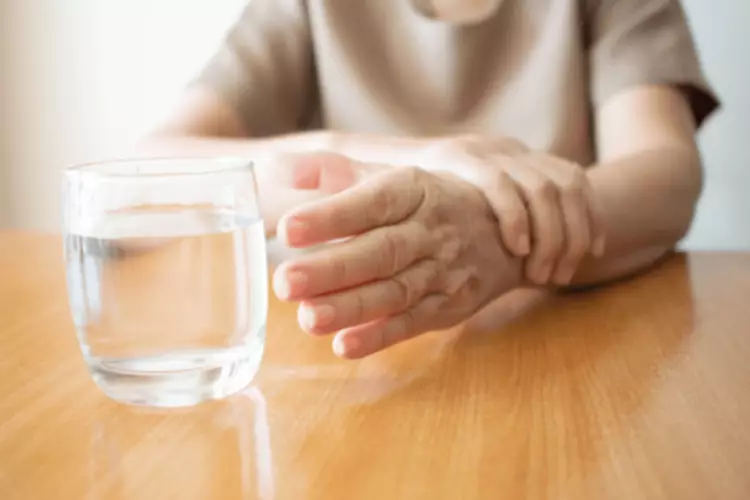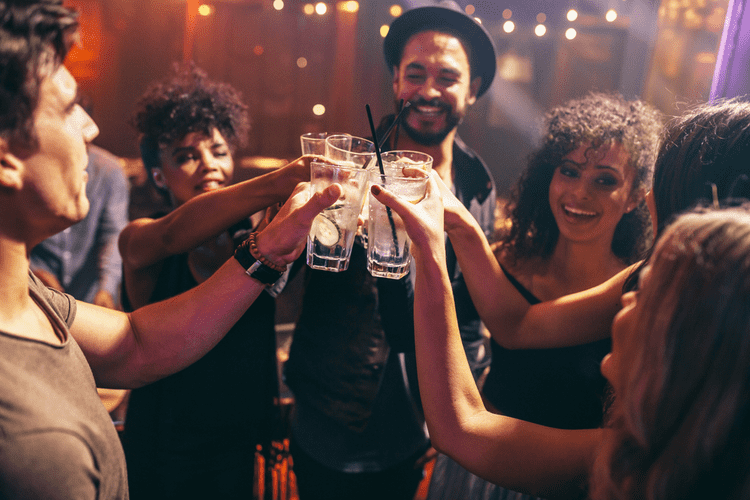Contents:


“This often creates more anxiety when sober, and negatively reinforces one to drink again to escape those psychological and physical feelings,” the Addiction Center medical content director said. Anxiety is a normal reaction to stress, characterized by feelings of nervousness and anxiousness, explains the American Psychiatric Association. However, the chronic use of alcohol can lead to anxiety as it impacts your ability to respond to stress in healthy ways.
Footprints to Recovery provides evidence-based substance use disorders treatment that includes therapeutic approaches for anxiety and other psychiatric conditions. Using alcohol to cope with anxiety can begin a cycle that brings on even more anxiety. If you drink regularly, you’ll develop a tolerance to alcohol. It will take increasing amounts to get the effects you desire.
But we also want to remind you that these articles are not meant as a substitute for medical advice, diagnosis, or treatment. No matter what your circumstances, it’s never too late—or too early—to reach out for assistance. There are many different ways to get help with your drinking, which means there’s probably at least one that’ll work for you.
Trusted & Approved Addiction Treatment Center
The imbalance of brain chemicals from alcohol dependence can make anxiety the norm except when you’re drinking. The problem is that with ongoing alcohol abuse and overstimulation of feel-good chemicals like serotonin and dopamine, your reward center thinks you need alcohol to survive. It starts ranking alcohol right up there with food, sex, water, and sleep. Without alcohol, your brain starts sending you signals to do whatever you need to do to get more of it .
Alcohol consumption can increase your heart rate, which can trick your brain into going into a state of anxious anticipation. It’s important for you to understand the relationship between AUDs and anxiety. In the event you feel you may have fallen into this situation, you know how to get help so you can get your life back on track. Alcohol therapy, you can create a personalized treatment plan tailored to your needs and goals.
Alcohol, Anxiety, and Depressive Disorders
These findings suggest that drinking may increase the risk of developing or experiencing anxiety disorders. It seems like drinking alcohol is a common way to unwind and de-stress but is it safe? Many people are not aware that alcohol misuse can lead to an increased risk of anxiety and panic attacks.
Our professional team of doctors at Indiana Center for Recovery can help you determine if there is a potential link between alcohol and your condition and provide advice on how to manage it responsibly. However, anxiety symptoms can appear in people of any age and background. According to the National Institute on Alcohol Abuse and Alcoholism, more than 18 million Americans suffer from alcohol abuse or addiction.
Sunnyside members see big results in their first 30 days, and it only gets better from there. Start with your 15-day free trial, then stick with it if it’s right for you. Tell us a little about yourself and your goals so we can personalize your experience. If you’re like me, it may feel like everything in the world is terrible right now. Social anxiety typically stems from circumstances we believe will happen but don’t come to fruition.
The Latest in Anxiety Disorders
Alcohol misuse and depression are both serious problems that you shouldn’t ignore. If you think you have a problem with either, talk to your doctor or therapist. There are lots of choices when it comes to medication that treats depression, and there are drugs that lower alcohol cravings and counter the desire to drink heavily. You can also get help from Alcoholics Anonymous or an alcohol treatment center in your area.
Why does drinking alcohol give me anxiety?
Alcohol has an effect on brain chemistry – it can induce panic because of its effects on GABA, a chemical in the brain that normally has a relaxing effect. Small amounts of alcohol can stimulate GABA and cause feelings of relaxation, but heavy drinking can deplete GABA, causing increased tension and feelings of panic.
So, if you feel like you don’t have alcohol dependence, but alcohol consumption is giving you anxiety, then really the best thing you can do is learn how to manage it. The common-factor model suggests that anxiety and alcohol use disorders are not directly related, but that an outside factor can cause them to co-exist. This could be something like genetics or a personality trait like being sensitive to anxiety. Other factors like drug addiction or depression can also have an effect.
They use these substances to mask their feelings and the physical side effects that come along with them. A recent clinical study also found that a combination of cognitive-behavioral therapy and motivational enhancement therapy may be successful in treating co-occurring social anxiety disorder and alcohol abuse. Motivational enhancement therapy is used in drug abuse counseling and encourages patients to turn their desire to change into concrete goals to do so. About 15 million U.S. adults, or 7 percent of the population, have social anxiety disorder in any given year. And it isn’t unusual for people with social anxiety disorder – or other anxiety disorders – to drink excessively to cope with symptoms or try to escape them.
Substance Use Treatment
You feel guilt, shame, remorse, or other intense emotions about your drinking. Having these feelings about your relationship with alcohol without having the support you need to confront them can make it more difficult to cope. The initial symptoms of anxiety and panic may be related to alcohol withdrawal. It could also be that alcohol use provides a mechanism for these disorders to develop. Studies have shown a different trend of alcohol use in people who are diagnosed with generalized anxiety disorder or panic disorder. Several proposed explanations exist for the link, including genetics, a person’s environment, and the brain mechanisms related to addiction and anxiety symptoms.
Does alcohol make anxiety worse?
How alcohol worsens anxiety. Alcohol changes levels of serotonin and other neurotransmitters in the brain, which can worsen anxiety. In fact, you may feel more anxious after the alcohol wears off. Alcohol-induced anxiety can last for several hours, or even for an entire day after drinking.
Alcohol use may temporarily raise blood pressure and heart rate at the moment. Long-term elevated heart rate, high blood pressure, weakening heart muscle, and irregular pulse might result from drinking more than is recommended. If the anxiety after drinking eco sober house price is related to a hangover, “it could certainly last as long as other hangover symptoms,” Koob said. If the anxiety is related to chronic excessive consumption, it is possible for the anxiety to last several months or more after a person stops drinking.
Make time each day to engage in a relaxing hobby, such as listening to music or painting. Set aside time every day to focus on relaxation techniques, such as meditation or yoga. There are some daily changes you can make to reduce your anxiety.
Many believe drinking alcohol will quickly dissipate their anxiety and make them feel better. Some people may experience more anxiety after drinking than before.A few different factors can contribute to how long anxiety lasts after drinking. Alcohol consumption can increase stress levels, leading to an increase in anxiety symptoms.
- Psychologists in a few states may have the ability to prescribe medication, but this is not common or widespread.
- Our website is not intended to be a substitute for professional medical advice, diagnosis, or treatment.
- It can be helpful to have someone to talk to who understands what you’re going through.Another way to calm down is to take some time for yourself.
- It’s not always clear if depression makes you drink or vice versa.
- When your brain doesn’t have enough water, both cognition and mood can decline.
This can result from alcohol’s impact on your brain’s amygdala, which controls your unpleasant emotions. Chronic alcohol consumption can lead to anxiety as it impacts a person’s ability to cope with stress in healthy ways. https://sober-house.org/ However, the brain adjusts to these sedating effects and when the alcohol wears off, “activity in the stress circuitry is higher than normal,” which leads to greater levels of anxiety and general dysphoria, Koob said.
Many people with anxiety are also prone to alcohol use disorder . And people with an alcohol use disorder are2 – 3 sober house boston timesmore likely to have anxiety. Unfortunately, using alcohol only worsens mental health issues in the long run.
Annuities can ease financial stress, says columnist Ben Kunes – The Edwardsville Intelligencer
Annuities can ease financial stress, says columnist Ben Kunes.
Posted: Wed, 05 Apr 2023 16:45:06 GMT [source]
According to the Anxiety and Depression Association of America , about 7 percent of Americans have this form of anxiety. Certain medications have some ugly side effects — and can cause anxiety symptoms or an anxiety attack. Prescription medications to watch out for includethyroiddrugs andasthma drugs, while over-the-counter decongestants have been known to cause anxiety symptoms in some people. If you suddenly stop taking certain medications sometimes used to treat anxiety, such asbenzodiazepines, withdrawal may cause added anxiety. Research shows that a combination of environmental and genetic factors likely increase a person’s risk for developing an anxiety disorder, notes the National Institute of Mental Health. Like so many health conditions, anxiety appears to run in families.
Nearly one-third of people with major depression also have an alcohol problem. Research shows that depressed kids are more likely to have problems with alcohol a few years down the road. Also, teens who’ve had a bout of major depression are twice as likely to start drinking as those who haven’t. If you don’t have a trusted person to talk to, you might try joining a support group or attending group counseling.
How do I stop anxiety after drinking?
- Manage physical symptoms. The mind-body connection likely plays a big role in hangxiety.
- Take a deep breath — and then another. Deep, slow breathing can help you relax and slow a racing or pounding heart.
- Try mindfulness meditation.
- Put the night into perspective.






